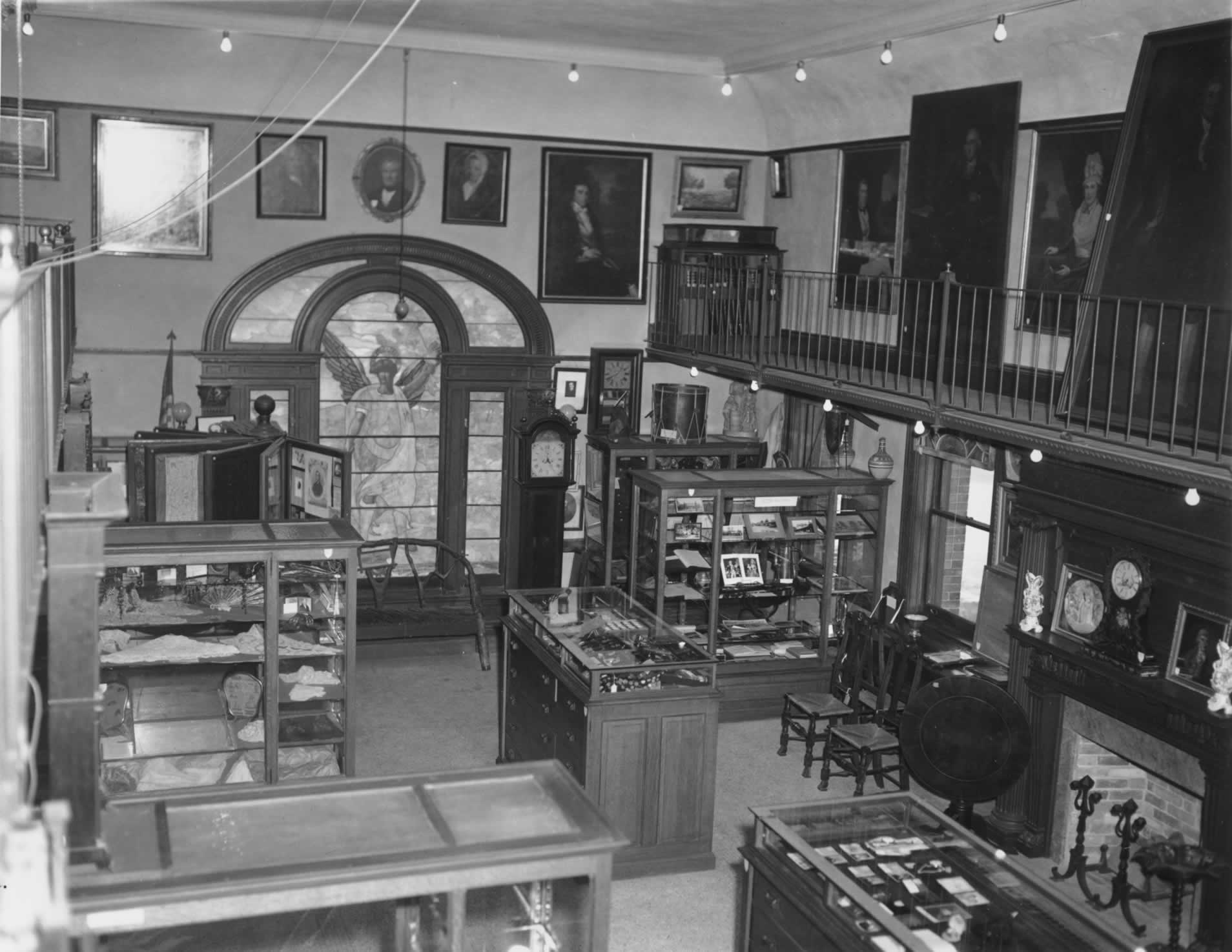The Historical Society has recently undertaken to create a new five year Strategic Plan for the organization. This exercise is done every five years and the document produced creates a overarching vision for the organization and guides the Historical Society through future public and educational programming, allocation of financial resources, interactions with the larger community and collections decisions.
The meetings have only begun and it will be several months before the Historical Society has a completed document to send to the Board of Directors for approval. Recently, while searching through the institutional records I came across another moment in the Historical Society’s own history in which the organization did some internal reflection and determined the future path of the museum.
It was September 1966 and then Board of Trustee President Henry L. Shepard had just presented a self-authored “Philosophy of Our Museum” to the entire Board. The Historical Society had just been through some big changes. Five years before the museum had been offered and accepted the gift of the Oliver Wolcott, Jr. house. At that time, the museum continued to share the Noyes Memorial Building (present day Litchfield History Museum) with the Litchfield Circulating & Wolcott Libraries. Both organization were overcrowded and unable to expand under the current arrangement. The Historical Society had been looking for another property in town to purchase but until the Wolcott, Jr. house was offered nothing had worked out.
The Historical Society spent the next three and a half years renovating the house and engaging in serious debates over how to the use the new space. The organization already managed the Tapping Reeve House and Litchfield Law School buildings at great expense. Several board members expressed anxiety at maintaining another historic house. While the institutional records are spotty and not every conversation well recorded, by June of 1964 a deal was struck and the Historical Society turned over the Oliver Wolcott, Jr. house to the Library in exchange for full use and sole ownership of the Noyes Memorial Building. The deal gave each organization its own space and the much desired room to expand.
Shepard saw this as a pivotal moment for the Historical Society. As the board discussed how to use the Library’s old rooms in the Noyes Memorial Building, Shepard had a larger vision. He saw this as a moment for the organization to define itself. He said in his Philosophy of Our Museum:
We have six immediate and long-run objectives: (1) To interest the general public in coming to an attractive, exciting museum. (2) To eliminate clutter. (3) To catalog and classify our collections. (4) To foster the education of young people. (5) To prepare a valid presentation of our legitimate needs, in compelling fashion, to the Ford Foundation or some similar grantor of funds. (6) To operate as a community institution in Litchfield for all of its people.
Objective (6) is probably the most important.
Our Museum should concentrate on Litchfield, to the end that we may acquaint everyone in our township – – not only the boro, but also Bantam, Morris, Warren and Northfield – – with its history, in the various aspects of that word. The young people, growing up here, as well as their parents, will be given the opportunity to feel the spirit vibrations that underlay the creation and development of the United States of America. Moreover, the young will be enabled to perceive that ‘the dream’ may be realized here at home. Much of the current restlessness stems from lack of intellectual nourishment. I cannot think of a happier outcome of our work than to overhear a boy outside of Crutch & MacDonald’s say to another, ‘Hey, let’s go over to the Museum and see what’s new.’
It is necessary to expand the community philosophy further at this time. I trust that all who read this memorandum will communicate with me or Committee chairmen to express their ideas and suggestions. Bear in mind that our aim is to collaborate, not complete, with other organizations and institutions in Litchfield.
For me, as for you, the Litchfield Historical Society is a labor of love. We possess a jewel, whose rays, through our concerted, intelligently generous efforts, can brighten our superb community.

Present day Liggett Gallery prior to 1966 interior renovation.

Present day Liggett Gallery after the renovations
Under Shepard’s leadership the museum transformed from a 19th century cabinet of curiosities to a contemporary museum. Overly cluttered galleries were replaced with open, brightly lit rooms containing thematic exhibits. The museum and archival collections were divided and cared for by separate curators, a specialization of labor that the Society continues to this day.
As Shepard outlined:
At this stage, let us concentrate on open space, mainly that acquired from the Wolcott Library and secondarily what we can free from clutter.
Let us think in terms of white paint for the walls and woodwork. Our collections will give all the accents that are needed to interest the eye. Let us eliminate frills and furbelows wherever possible and block off unnecessary or over-decorated windows. . . Let us make our museum an inviting, spacious place.
Shepard achieved many of these goals and today, the Litchfield Historical Society continues to be an inviting, spacious place. As our current Strategic Planning progresses, these voices from our past can provide moments for reflection and guidance moving forward.